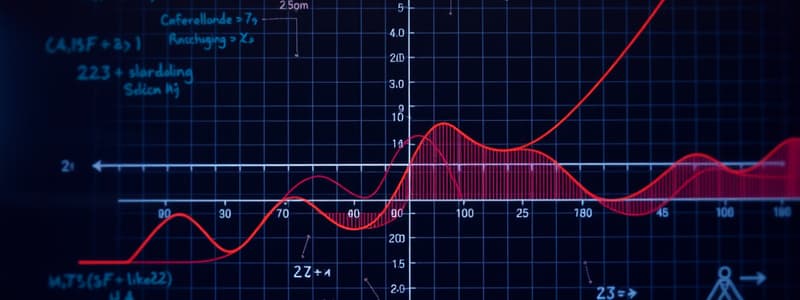Podcast
Questions and Answers
What is a general rule for creating graphs?
What is a general rule for creating graphs?
- Each axis should be labeled (correct)
- The independent variable goes on the y-axis
- Graphs do not need titles
- Data can be plotted without considering the range
What are bar graphs used for?
What are bar graphs used for?
To compare things between different groups or to track changes over time.
What type of data are histograms used for?
What type of data are histograms used for?
Continuous data
What are line graphs used for?
What are line graphs used for?
What is the purpose of a scatter plot?
What is the purpose of a scatter plot?
When are pie charts best used?
When are pie charts best used?
Flashcards are hidden until you start studying
Study Notes
General Graphing Rules
- Every graph must have a clear title reflecting the data represented.
- Label both axes: the x-axis for the independent variable and the y-axis for the dependent variable.
- Determine the range of data to ensure the graph is appropriately sized for variability in values.
- A key may be necessary to clarify colors or symbols in the graph.
Bar Graph
- Suitable for comparing different groups or tracking changes over time.
- Ideal when data is categorized, with spaces included between the bars to indicate distinct groups.
Histograms
- Used for representing continuous data rather than categorized data.
- No spaces are present between bars, highlighting the continuous nature of the data.
Line Graph
- Effective for illustrating changes over time, each data point is connected to show trends.
- Provides a visual representation of data progression across intervals.
Scatter Plot
- Utilized to examine potential relationships between two variables.
- Individual data points are plotted, and a best fit line may help illustrate correlations.
Pie Graph
- Best for comparing parts to a whole, showing the size of each category in relation to the total.
- Each slice represents a proportion of the total dataset, making it visually representative of percentages.
Studying That Suits You
Use AI to generate personalized quizzes and flashcards to suit your learning preferences.




